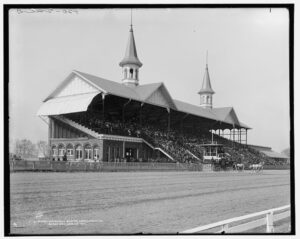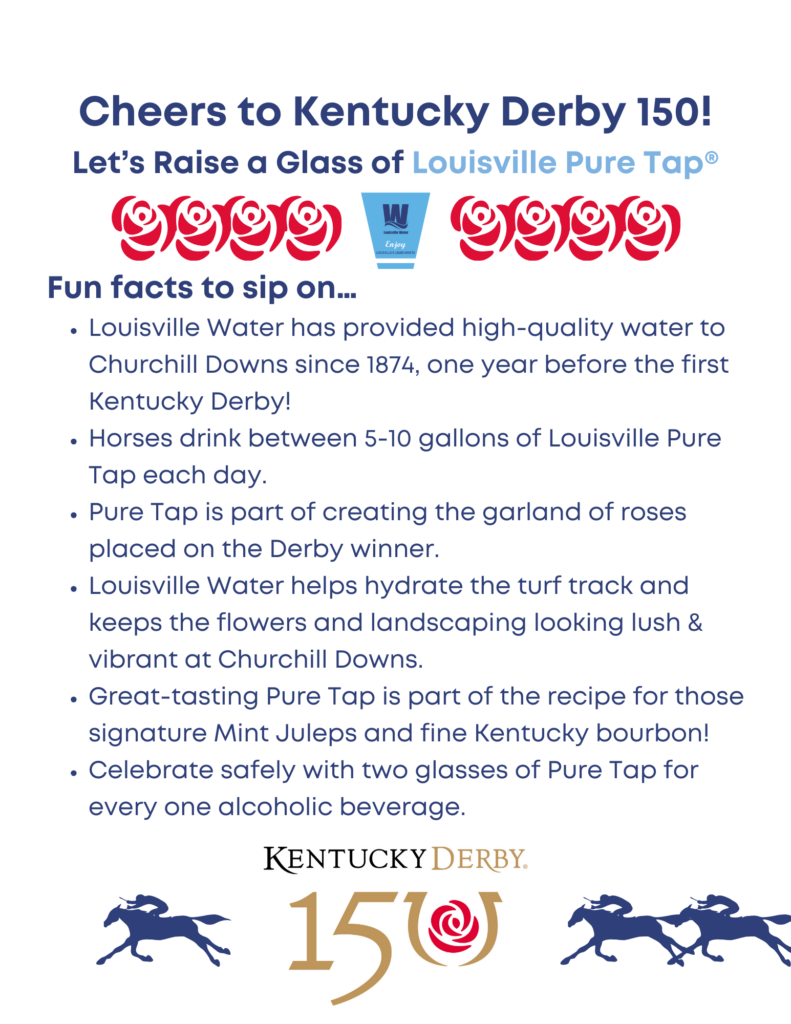 As part of 502’sDay and the 150th Kentucky Derby, Churchill Downs is celebrating 150 years of Louisville businesses. That includes Louisville Water which began operations in October 1860. Our history with the legendary racetrack actually started in 1874, one year before the first Derby.
As part of 502’sDay and the 150th Kentucky Derby, Churchill Downs is celebrating 150 years of Louisville businesses. That includes Louisville Water which began operations in October 1860. Our history with the legendary racetrack actually started in 1874, one year before the first Derby.
Believe it or not, there was a bit of a debate about whether Louisville Water should do business with Churchill Downs. In 1874, Louisville Jockey Club President Meriwether Lewis Clark, Jr., asked Louisville Water’s board for an extension of the water mains to the track which was in the process of being built. The board initially declined the request. This could have left the track and the Kentucky Derby dead in the water before the first horse even stepped foot on the grounds. Luckily, by the end of that year—perhaps due to outside pressure—Louisville Water reversed that decision, and the Jockey Club received a two-inch service line and meter.
A New York correspondent would later note “the excellent arrangements made for watering the track and grounds” that “will secure a never-failing supply of water.” Another feature was that all 20 white-washed stables were “equipped with hydrants from which water can be drawn the same as in the city.” The access to water in the stables was considered “perfect.”
This means that Aristides, who won the first Kentucky Derby run in 1875, likely prepped for that historic race by drinking some refreshing water supplied by Louisville Water. We can’t say for sure whether that helped him win, but we can say that Louisville Water is the water of champions. Today, horses at Churchill drink an average of five to 10 gallons of Louisville Pure Tap® a day!
The importance of water extended beyond the track itself too. Sprinkling the dirt streets was another need of the day. A gravel drive with dirt roads on both sides connected the fashionable Third Street to the entrance gates. Sprinkler attachments were installed every thousand feet. It was expected that, during the race meets, the drive and the track would be watered every day.
Louisville Water’s connection to Churchill Downs doesn’t end there. America’s Best Racing shared in a recent article that Charles F. Grainger, who also served as Louisville Water’s president from 1910-1913, was one of the earliest members of the Kentucky Racing Commission and was part of a group who purchased the racetrack in the early 1900s to save it from a potential takeover. According to the website, Grainger and Matt Winn spearheaded a pari-mutuel wagering operation that helped save the Kentucky Derby in 1908 and ultimately grew the Derby’s presence nationally.
These days, Louisville Water’s role during the Kentucky Derby looks a little different and has grown exponentially. Read more about how our employees help get Churchill Downs ready to shine for the most exciting two minutes in sports!


